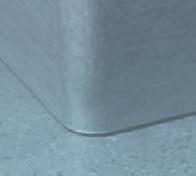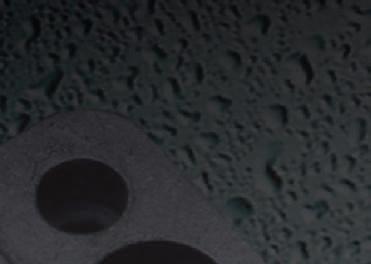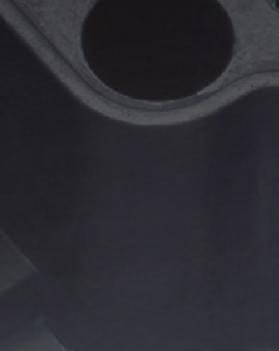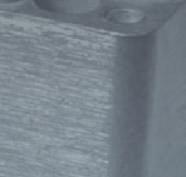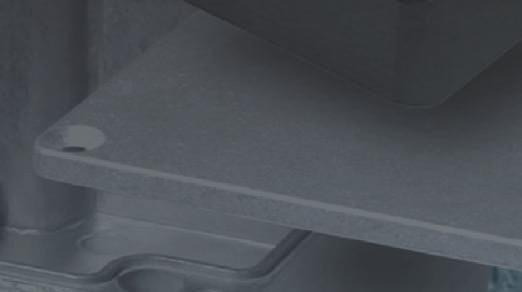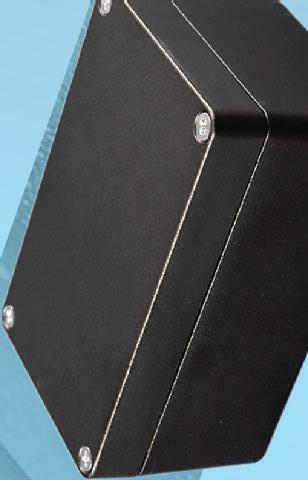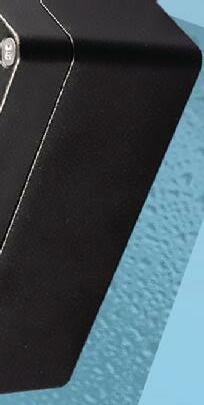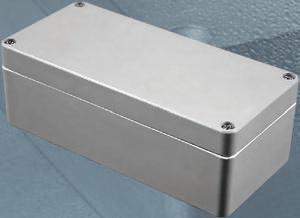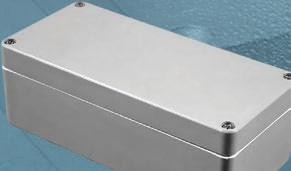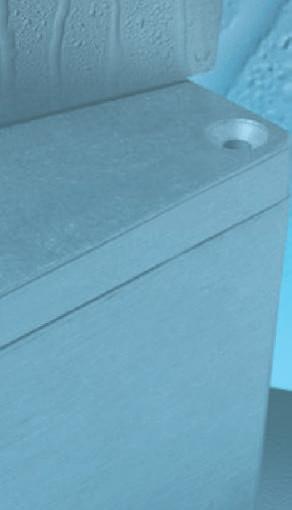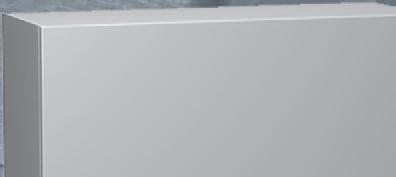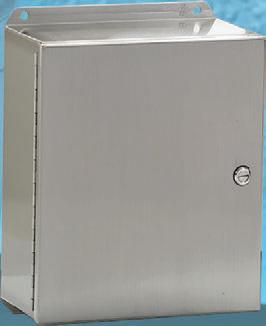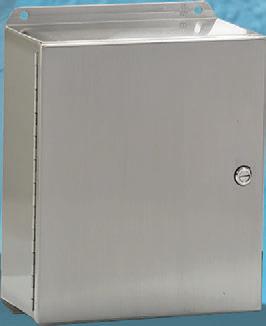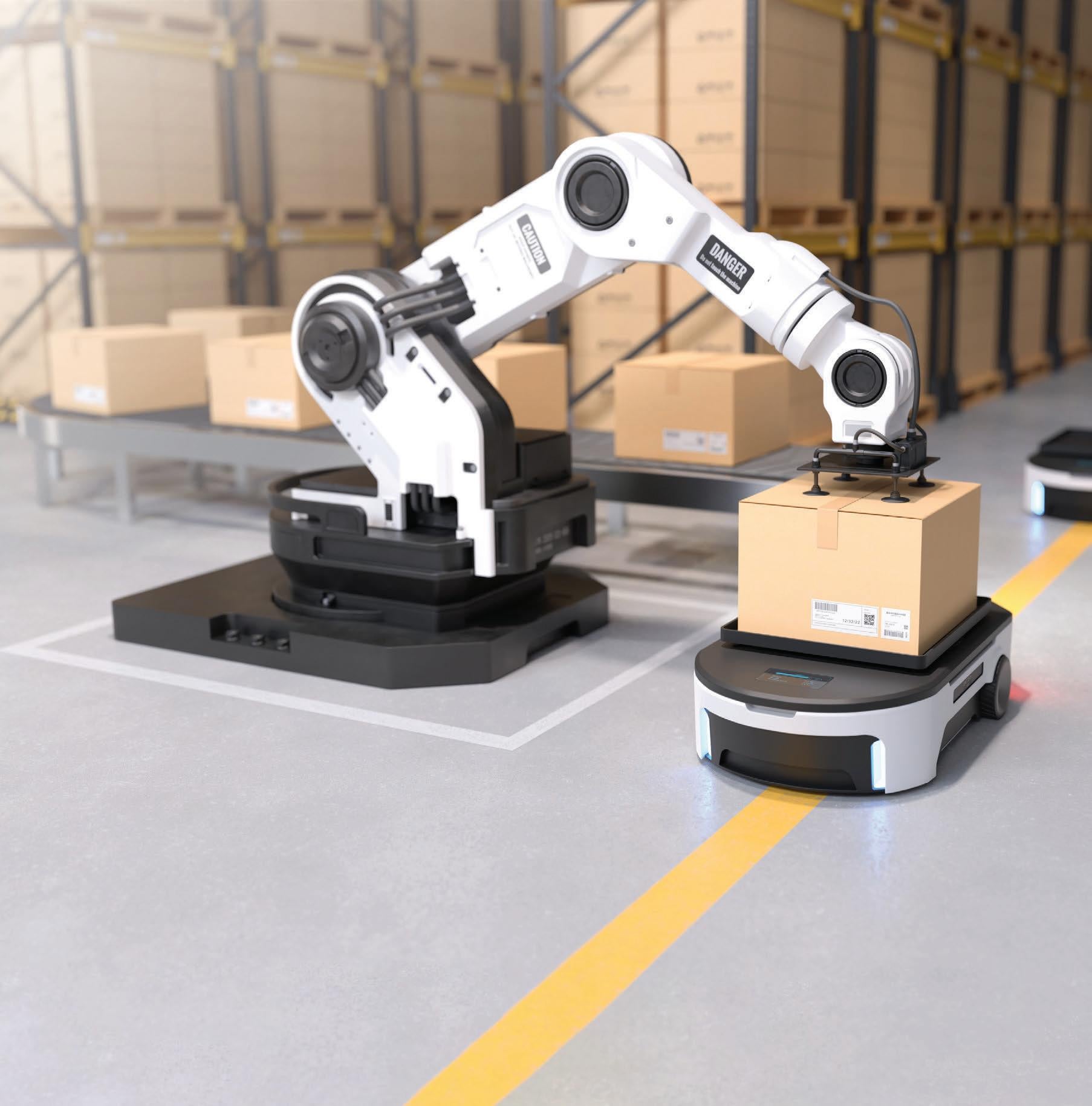




































What lies ahead for the electronic design community this new year? Well, we sampled the prognostications of multiple trusted sources and came up with some interesting perspectives.
Driving the ‘data is the new oil’ narrative, the emergence of powerful applications, such as artificial intelligence, AR/VR, digital twins, sensors and machine learning will benefit from connected data, which will deliver unprecedented customer value, according to the annual industry predictions delivered by connectivity system provider Molex.
“We expect pressure for faster cloud-computing speeds and edge-computing solutions that move data processing and computational storage closer to the edge of high-speed networks,” stated Lily Yeung, VP at Molex Ventures.
Yeung anticipates that we will see a continued push for 5G, diagnostic wearables and electrification, which will contribute to ever-increasing amounts of data that must be collected, calibrated and shared across a multitude of smart devices and platforms.
The importance semiconductors play in the process of an electronic schematic design cannot be overstated. Thus, conjecture around this vital part runs deep. Throughout 2023, we will continue to see chip companies using AI to help design chips faster, cheaper and more efficiently, according to Deloitte. The consultancy firm predicts that the world’s leading semi players could spend US$300 million on internal and third-party AI tools for designing chips this year, and that number may grow by 20% annually for the next four years to surpass US$500 million
in 2026. The impact of AI will likely go far beyond the money spent on AI design tools. They can enable chipmakers to push the boundaries of Moore’s Law, save time and money and even drag older chip designs into the modern era.
compound semiconductors, is expected to accelerate to nearly 60% in 2024,
Since 2020, electronic component supply chains - in particularly microchips, have been extremely fraught and the overreliance on Taiwan. It takes many years and billions of dollars to build wafer fabs, so an increase in supply will only happen slowly, however there has been a surge in the creation of new fabs outside of SE Asia, which will eventually help the supply side. Not sure immediately enough to impact 2023?
JANUARY/FEBRUARY 2023 Volume 45, Number 01
READER SERVICE
Print and digital subscription inquiries or changes, please contact Angelita Potal Tel: (416) 510-5113 Fax: (416) 510-6875 Email: apotal@annexbusinessmedia.com Mail: 111 Gordon Baker Rd., Suite 400 Toronto, ON M2H 3R1
EDITOR Stephen Law slaw@ept.ca · (416) 510-5208
WEST COAST CORRESPONDENT Sohail Kamal · sohail@nextgear.ca
SENIOR PUBLISHER Scott Atkinson satkinson@ept.ca · (416) 510-5207
ACCOUNT MANAGER Joanna Malivoire jmalivoire@ept.ca · direct 866-868-7089
SALES MANAGER Chander Verma cverma@ept.ca · cell 437-218-0941
ACCOUNT COORDINATOR Shannon Drumm sdrumm@annexbusinessmedia.com
“The semiconductor shortage has demonstrated the need for faster, more efficient manufacturing of chips in order to meet demand,” said Paul Silverglate, vice chair, Deloitte LLP and U.S. technology sector leader. “AI-aided design can be used to address this need and can also make older chips better by moving to more advanced process nodes, and even help close the chip talent gap. By making chip design faster with AI, firms can move beyond the current market challenges and focus more on what’s next.”
Supercharged semiconductors made of high-power materials are taking chip development to a new level. Replacing silicon, these materials - primarily gallium nitride and silicon carbide - are suited for the higher voltages, power levels and resilience needed for increasingly common applications such as EV batteries, super-efficient consumer electronics chargers, powerful solar panels, advanced military applications, space technology and nuclear energy.
Deloitte predicts that chips made of high-power semiconducting materials could sell a combined US$3.3 billion in 2023, up almost 40% from 2022. Growth in these types of chips, collectively known as power
The demand side however is weakening due to international recessions and slow economic growth. That combined with over-buying by many companies means that demand is already weakening and pundits expect many, but not all, semiconductor suppliers to reduce lead times in 2023, though a return to ‘normality’ is not expected next year.
From a supply chain perspective, companies and governments are embracing multi-billion dollar long-term plans to strengthen the global semiconductor fabrication and packaging scenario.
Looking ahead, the global semiconductor supply chain will work towards developing a substantial U.S. presence in both engineering design and manufacturing. This means embracing a national strategic semiconductor policy – supported by the recently installed CHIPS and Science Act, which is expected to catalyze the geographic diversification of the semiconductor industry in the U.S. over the next four years.
As the closest business ally and geographic neighbour to the U.S., Canada will net out some residual benefit.
STEPHEN LAW Editor slaw@ept.caConnect with EP&T magazine @EPTmagazine facebook.com/EPTmag/ /ept-magazine info@ept.ca ept.ca
MEDIA DESIGNER Alison Keba akeba@annexbusinessmedia.com
AUDIENCE DEVELOPMENT MANAGER Anita Madden amadden@annexbusinessmedia.com (416) 510-5183
GROUP PUBLISHER Paul Grossinger pgrossinger@annexbusinessmedia.com

COO Scott Jamieson sjamieson@annesbusinessmedia.com
EP&T is published eight times per year by
ANNEX BUSINESS MEDIA 111 Gordon Baker Road, Suite 400 Toronto, ON M2H 3R1 Tel (416) 442-5600 Fax (416) 510-5134 annexbusinessmedia.com
Canada – $58.50 one year; $94.00 two years USA – $134.00 (CAD) per year
International – $183.50 (CAD) per year Single copy – Canada $15
ISSN 0708-4366 (print) ISSN 1923-3701 (digital)
PUB. MAIL AGREEMENT NO. 40065710 Return undeliverable Canadian addresses to: EP&T Circulation Department, 111 Gordon Baker Rd. Suite 400, Toronto, ON M2H 3R1
© 2023 EP&T. All rights reserved. Opinions expressed in this magazine are not necessarily those of the editor or the publisher. No liability is assumed for errors or omissions or validity of the claims in items reported. All advertising is subject to the publisher’s approval. Such approval does not imply any endorsement of the products or services advertised. Publisher reserves the right to refuse advertising that does not meet the standards of the publication. Occasionally, EP&T will mail information on behalf of industry-related groups whose products and services we believe may be of interest to you. If you prefer not to receive this information, please contact our circulation department.
PRINTED IN CANADA
Canada’s information leader for electronic engineers and designers
All parties are embracing megamillion, long-term plans to strengthen the semiconductor ecosystem


Just as construction of its first fab in Arizona is well underway, contract semiconductor maker Taiwan Semiconductor Manufacturing Co. (TSMC) announced it has also begun building a second fab, which is scheduled to begin production of 3nm process technology in 2026. The first fab is scheduled to begin production of N4 process technology in 2024.
The overall investment for these two fabs will be approximately US$40 billion, representing the largest foreign direct investment in Arizona history and one of the largest foreign direct investments in the history of the United States.
Officials from the U.S. presidential administration said the two TSMC plants as well as new factories by Intel, Micron, Wolfspeed and others could give a decisive edge to the American military and economy at time when competition with China is heating up.
In addition to the more than 10,000 construction workers who helped with construction of the site, TSMC Arizona’s two fabs are expected to create an additional 10,000 high-paying high-tech jobs, including 4,500 direct TSMC jobs.
Montreal design house Orthogone has created the “future of electronic trading”.
Orthogone Technologies, a multi-disciplinary engineering firm that provides consulting services in R&D, electronic product design and digital transformation has created what it is calling “the future of electronic trading”. The Montreal-based design house has done so by unveiling its Ultra-Low Latency (ULL) FPGA Framework.
The solution is supported on the new Alveo X3 accelerator cards from AMD, and is the result of more than five years of R&D in high-performance FPGA and software solutions specifically designed for ultra-low latency financial applications.
“We are proud to leverage our portfolio of ultra-high performance IP cores to build this integrated solution and to partner with AMD to provide our joint customers with a complete FPGA framework to rapidly develop their financial applications,” explains Alexandre Raymond, CTO, and co-founder of Orthogone Technologies.
The partnership deal was signed by ZeroKey CEO & co-founder, Matthew Lowe,(left) and Nexty president, Yasuhiro Kakihara (right).

To simplify and accelerate project development, the Framework kit includes a complete suite of IP cores, an end-to-end FPGA development environment, including design scripts, simulation testbenches, the AMD Alveo X3522PV accelerator card-based reference design, and an in-depth software framework.
ZeroKey Inc., Calgary-based developers of highly accurate large-scale 3D real-time location system (RTLS), has partnered with Nexty Electronics Corp., a division of Toyota Tsusho Group’s electronics trading company.
ZeroKey services global markets with an emphasis on digitization and operational visibility of industrial manufacturing, warehousing, automotive, and supply chain operations. Partnering with Nexty, an accomplished electronics distribution company with global sales channels across key market segments strengthens ZeroKey’s support and expansion of its customer base in Eastern Asia.
ZeroKey’s second-generation technology, Quantum RTLS unlocks digitizing and digitally twinning processes in real-time and with 1.5-millimetre 3D accuracy across an entire facility. The hyper-accuracy that Quantum RTLS brings to industrial environments dramatically increases production efficiency and operational visibility.
Mohawk College and AIoT Canada have partnered to advance innovation and applied research in the internet of things (IoT) and artificial intelligence (AI) across the country.
The two-year strategic alliance between Mohawk College’s Sensor Systems and Internet of Things (IoT) Lab and AIoT Canada, the national technology cluster for IoT technology adoption and development, will pursue a number of research projects and initiatives to help Canadian companies introduce or increase the use of IoT technology in their operations.
As part of the partnership, Mohawk and AIoT will also build a Smart Factory Living Lab, to serve as a test bed and demonstration site to support the exploration of 5G technology and Artificial Intelligence (AI).
Vancouver-based tech start-up VoltSafe Inc. has reached a strategic partnership with Menlo Microsystems Inc. to co-develop what they are calling “the most advanced” electrical plug technology ever invented. Both companies are strong proponents of advancing how the world connects to electricity, and the combination of Menlo Micro’s Ideal Switch technology with VoltSafe’s advanced smart electrical outlet and connector is setting out to enable the future of next-gen smart power connectivity.
Seeing deficiencies in existing relays and switches that caused the products they operated to be bigger, slower, less capable, or more expensive, Menlo Micro set out to create a better solution and developed Ideal Switch – a significant electronic component innovation since the transistor. The firm refers to Ideal Switch as the electronic industry’s “Holy Grail” – a device that delivers all the benefits of a mechanical relay and a semiconductor switch, with no compromises. The Ideal Switch is tiny, fast, reliable, withstands extreme temperatures, is ultra-low loss and can handle 1,000s of watts. This March, Menlo Micro announced its USD$150 million Series C,
bringing its total cumulative funding to more than USD$225 million.Vertical Venture Partners and Tony Fadell’s Future Shape led the round. Menlo’s Micro’s confidence in VoltSafe’s disruptive technology powering the future of how the world connects to electricity, paved the way for this early collaboration.
“Our goal is to innovate and empower our partners to disrupt the traditional world of relays and switches,” said Chris Giovanniello, co-founder and SVP marketing at Menlo Micro. “With our Ideal Switch technology, we are committed to delivering the best and highest performance switching technology to create a more energy efficient and sustainable world, with an entirely new category of electronic switches. We look forward to working with VoltSafe to help the entire electrical ecosystem unlock the promise of next-gen smart power connectivity.”
Recognized for reinventing the pronged electrical plug with the first ever prong-less magnetic electrical plug for high power, VoltSafe developed the ground-breaking, patented Canadian technology in 2015. Since then, the firm has created the world’s safest, simplest, and
smartest plug design since electricity came into homes more than 140 years ago.
Four years ago, VoltSafe successfully pitched on Dragon’s Den, receiving three offers above ask, and recently won the BC Cleantech Newcomer award at GLOBE Cleantech 2020. Its first product to market is VoltSafe Winter – a magnetic plug for block heaters.
The company’s current product pipeline includes magnetic plug replacement solutions for household, commercial, marine, electric vehicles, and more.
VoltSafe continues to rapidly expand into multiple verticals, while partnering-up with Menlo will enable the B.C. company to produce even more sleek embodiments with faster, thinner switches and optimal GHG emission reduction features.
Voltsafe Home is an advanced novel conductive connector and outlet or ‘smart plug’.

“Integrating Menlo technology into our product embodiments will elevate the efficiency of our connector solutions, allowing us to create even thinner, smarter outlet systems than ever before. We’re working extremely hard, co-developing a pilot project for a major reveal in the short months ahead,” says VoltSafe CTO, Sanad Aridah.
VoltSafe has discovered a smarter and safer way to connect to electricity using magnets. Importantly, its patented technology empowers retail producers, industries, governments and essential services to do their jobs more safely, efficiently and sustainably.
The firm’s patented tech allows power to only flow once hot, neutral and ground are connected which means they are completely safe to the touch, even if exposed. VoltSafe products also provide power-metering down to the plug level for a granular overview of how much electricity is being consumed at the outlet level.

The firm started its year off right, capturing two Innovation Awards at CES in Las Vegas this January – recognizing both VoltSafe Home and VoltSafe Marine.
www.voltsafe.com
Our goal is to innovate and empower our partners to disrupt the traditional world of relays and switches
A new wave of electronics manufacturing is on the horizon, aiming to satisfy the increasing demand for sustainability and mitigate the impact of volatile energy prices.With the electronics industry accounting for 4% of global greenhouse gas emissions, it requires substantial innovation to reduce its environmental footprint.
Sustainability within the semiconductor and electronics industries is being driven forward by government mandates and green investment initiatives. Increasingly relevant to the survival of traditional manufacturers is the conscious choice of the public to only purchase from, and even only work for, companies that prioritize sustainable practices.
Environmentalism is often perceived as an obstacle-laden with legislative red tape and burdensome disclosures. However, companies that embrace environmentalism reap long-term rewards, and as such, the negative perception is replaced by one of opportunity. The implementation of low-emission manufacturing processes or the adoption of material recycling and recovery schemes can be the financially astute choice presenting an opportunity to reduce costs associated with energy consumption, waste treatment, and superfluous steps.
As energy prices rise globally, low temperatures and rapid processing methods become more attractive. Some of these methods employ additive approaches that substantially cut waste by printing material only where needed. This spares manufacturers the costs and emissions associated with excess materials and etching required in traditional subtractive manufacturing. For example, switching to additive methods of PCB manufacturing can lower water consumption by up to 95% - an outcome that could save the sector hundreds of millions of liters of water annually.

IDTechEx’s analysis expects
additive manufacturing to be particularly significant to the scaling of flexible printed circuit boards. Flexible pcbs are an important part of the emerging electronics industry as they enable a wider variety of applications than conventional rigid electronics. Flexible pcbs inherently require an overhaul of traditional processing – for example, using plastic or paper rather than conventional FR substrates. Embracing a new technology enables scope for further changes, such as transitioning to new materials and additive methods. Low-temperature processing may also be imperative for pcbs made on plastics such as polyethylene terephthalate (PET), considering that these have relatively low heat tolerances.
Sustainable electronics manufacturing presents many opportunities to be more efficient, reduce waste, and improve cost-effectiveness. Sustainable manufacturing can be facilitated through AI and IoT, as smart digital manufacturing methods automate processes.
Digital data analysis can help remove superfluous steps and illustrate where to focus efforts to eliminate excess material and energy consumption.
The past three years have been full of upheaval, with pandemics, trade wars, and energy crises dominating front-page headlines across the world. The turmoil
has brought to sharp relief how fragile the multi-billion dollar electronics industry is. The global chip shortage is a salient example of the damaging consequences of supply chain disruption.
While it may not be possible to immunize supply chains against all eventualities fully, there are acts that can be taken to minimize risk and reduce emissions. One method involves reducing dependency on geographic monopolies such as the Asia Pacific region, which currently dominates electronics manufacturing. Re-distribution of the electronics industry is gaining momentum of late, with hundreds of billions of dollars worth of funding going into revitalizing localized electronics manufacturing in the West, as outlined in both the US CHIPS & Science Act and the European Chips Act.
Increasingly, access to renewable energy is becoming a major factor as companies build new fabrication facilities. Samsung has already achieved 100% renewable energy for all of its sites in the US and China, with other household name companies following suit, such as Apple, IBM, Intel, and Nokia.
The availability of renewable energy sources varies substantially geographically, with the US and Europe leading the way with clean energy options compared to much of Asia Pacific (AP). Greater access to renewable energy may give the US and Europe a new
kind of leverage to encourage local manufacturing.Through substantial energy savings and energy independence, the production of various electronic components is likely to become increasingly cost-competitive with the Asia Pacific region.
Additionally, since ‘reshoring’ will require the construction of new manufacturing facilities, there’s a substantial opportunity to design and equip with sustainability in mind from the outset. In contrast, in existing production lines, much of the equipment is already depreciated, increasing the relative cost of new investments into more sustainable manufacturing methodologies.
The electronics industry requires an overhaul of traditional manufacturing approaches contributing to global warming. Switching to low-toxicity, low-emission chemicals and processes is a key challenge to be addressed in the near future as more companies commit to attaining net-zero targets. Additionally, it is important to stay ahead of the curve as carbon prices may rise, making renewable energy the more reliable energy source to utilize.
www.idtechex.com
Dr Isabel Al-Dahir is a Technology Analyst for IDTechEx
We are frequently seeing articles about electric vehicles and one subject that appears frequently is how far can they travel between charges. The industrial sector is also very conscious of this aspect of battery powered equipment. Warehousing, inspection, disinfecting, security and many other applications are now utilizing robots.
These robots fall into two classifications: Automated guided vehicles (AGVs) are programmed to follow predetermined routes and if there is an obstruction, operation will be halted until the obstruction is removed is removed. Autonomous Mobile Robots (AMRs) utilize sensors or scanners and rely on mapping and data to find alternative routes to perform their

function. A robot vacuum cleaner is a good example of this.
The run time of battery powered equipment is limited by two basic functions. One is the battery’s stored energy capability and the other is the amount of power drawn over a period of time. The run time could be increased by using a larger battery; however, this would increase the overall size and weight.
Run-time of battery powered designs is ultimately constrained by the law of conservation of energy. This essentially tells us that the amount of energy in an isolated system is fixed. Within such a system, energy can be converted from the battery to driving a motor for example. Between charging periods,
The relationship between energy (E) power (P) and time (t) is given in equation E=P x t.
Seeking a power converter with a logic level enable input (remote on/ off function) can allow the designer to turn quiescent sleep modes into deep sleep modes - such as in the application above.
there is a fixed energy budget that is established by the physical constraints of the battery itself, and it is incumbent upon the designer of the device to maximize the use of that budget.
EEvery battery powered device has one or more intended functions, jobs or tasks. These require energy to perform. The relationship between energy (E) power (P) and time (t) is given in equation E=P x t. Be conscious of the amount of power drawn from the battery and the amount of time the battery is in use.
36V or 48V batteries are being selected to reduce the weight and size of the copper wiring and to allow the use of more efficient dc motors. These
voltages may not be compatible with controllers, wireless communication devices or sensors. Dc-dc regulators are then used to decrease the voltage to a useable level.
As most battery powered applications do not require galvanic isolation between the battery and other components in the robot, it allows non-isolated dc-dc converters to be deployed. These non-isolated converters are significantly more efficient than 95 to 96% efficient isolated converters and can be as high as 98.5%. This reduces waste heat, simplifies cooling, makes the converter smaller and they have a lower price. The non-isolated converters accept a wide DC input with a wide output adjustment range.

Two types of non-isolated converters are commonly used. The ‘buck’ converter which ‘steps-down’ the input to a lower voltage (Figure 1) and the buckboost converter which can step-up or step down the input voltage (Figure 2).
Note that a converter should incorporate a bulk capacitance across the input. The battery has source impedance and this can impact the dc-dc converter’s performance. Having low impedance energy storage at the input of the converter will help supply peak currents during stop and start load transients.
Even though the dc-dc converter has a high efficiency, there are some losses which can be reduced to maximize the battery life. It is necessary to select a converter that is correctly sized for the application and understanding the efficiency vs load characteristic will help achieve this. Figure 3 shows a typical efficiency vs load curve for the TDK-Lambda i7A buck converter which can provide up to 750W.
At light loading the efficiency of power converters can be quite inefficient. With less than 5% loading we can see that the efficiency drops from 98% to about 95%. This may appear a small amount of power, but care and diligence spent on every Watt loss of power will add up. Other dc-dc converters may exhibit a drop in efficiency at 10, 20 or even 30% loading.
Of course, the conversion efficiency will be 0% when a power converter is operated at 0% load. Even when the output load is zero, there will be some residual amount current drawn from the input.This is to keep the control circuits energized and maintain the output voltage which may otherwise gradually
decrease over time due to parasitic impedances. This power draw under these zero load conditions is known as the quiescent consumption, a critical parameter in battery powered designs.
If the robot performance requirements have been carefully determined, it is not uncommon for most sub-circuits to spend a majority of their time in a quiescent state, waiting to perform some task quickly and efficiently.
In some situations, some output voltages need not be maintained in low power sleep modes. In these cases, significant additional energy can be saved by inhibiting the supply rails to entire sub-circuits. Seeking a power converter with a logic level enable input (remote on/off function) can allow the system designer to turn quiescent sleep modes into deep sleep modes, capitalizing on a larger energy savings.
Some manufacturers support digital-to-analog control of the output voltage. This feature can be used to reduce the output voltage and slow down the motor when the robot is returning back to its charging station for example.
Optimizing the power conversion design has several beneficial second order effects above and beyond the direct impacts highlighted thus far. By using a non-isolated converter, the requirement for a large, heavy ferrite transformer, which contributes to the size and weight of the end-device, is eliminated. In some instances, a non-isolated converter in a 1/16 brick package (34mm x 36.8mm x 11.5mm high) can offer the same amount of power as a 1/4 (58.4 x 22.9 x 8.8mm) or even a 1/2 brick (61 x 57.9 x 12.7mm) isolated converter. With lighter power electronics, the robot will weigh less reducing the motor power required to move the end device.This results in additional energy conservation and helps manage the energy budget mentioned earlier. Non-isolated converters can
S +V -V +V -V
Efficiency, (%)
S +V -V +V -V
S +V -V +V -V
D
Figure 1: Buck converter simplified schematic.
L Load Input Load Input
L Load Input Load Input
Efficiency, (%)
Efficiency, (%)
L
L Load Input Load Input
Figure 2: Buck-boost converter.
Figure 4: TDK-Lambda’s
i7A 750W dc-dc converter.
L
D2 S1 S2
L
C C
D D1 100 95 90 85 80 0612182430 36 42
D2 S1 S2
C C
D2 S1 S2
C C
D1 100 95 90 85 80 0612182430 36 42
D D1 100 95 90 85 80 0612182430 36 42
Output Current (A) Vin = 24V
Output Current (A) Vin = 24V
Output Current (A) Vin = 24V
Figure 3: i7A dc-dc converter efficiency profile versus output current.
also have streamlined feedback loops, removing cost, complexity, and some quiescent load from the design.
The selection of a suitable battery for your next battery powered design is important. It is arguably just as important to optimize the efficiency of the devise’s electronics and power conversion stages, thus maximizing the lifetime of the battery. Special attention should be given to the choice of topology, ensuring that as much of the battery’s output voltage range is utilized as possible, including the conversion from the battery voltage to the associated electronics driving the motor and the associated control and navigation functions.
Consider partnering with an experienced power conversion company to address the needs of your next battery powered design. There are many standard products available and selecting the right product for the application is very important.
www.us.lambda.tdk.com
The world’s reliance on cellular networks is undeniable. There are more than 8 billion mobile subscribers globally, and the average monthly data usage per subscriber will increase from 15GB by end of 2022 to 40GB by end of 2027. With the increased demand both in terms of traffic and service quality, the world has been waiting for 5G to fulfill the promises of coverage and excellence.
5G provides faster speeds, greater capacity, better reliability, and lower latency. This is done through advancements in terms of radio access technology with wider bandwidths and higher frequencies as well as the new 5G core architecture with end-to-end network slicing and guaranteed quality of service.

For service providers and the telecommunications industry, 5G deployments are a major and critical undertaking as they strive to increase market share with a more powerful and programmable network. This is done by deploying 5G SA architecture and supporting time-sensitive applications, higher capacity needs, and edge computing.
Unfortunately, improvements have been held back by development issues in radio access network and applications. However, this is about to change in 2023 due to new advancements in hardware technology and ease of deployment of small cells and private networks.
In 2023, we will see the first implementations of 5G that will allow mobile users and enterprises to fully experience the power of the technology at scale. Increases in 5G small cell coverage will come with less cost, easier deployment, and lower energy consumption, prompting applications of 5G including special use cases and critical services.
A small cell is a mini wireless network base station with integrated RF and networking functionalities to provide cellular access to a smaller number of users in an indoor or outdoor setting. They are made to be small, compact, and unobtrusive.
The 5G standard was designed to bring broadband capabilities to the widest possible user base; to bridge the gaps of zero coverage in places like rural areas, or scaling coverage to support massive numbers of users in high-density urban areas. Macrocells are the mainstream choice of deployment, representing high-capacity radio equipment with high power signals that generally stand 200 feet or higher with strict requirements in terms of physical locations and regulatory laws. They are costly and consume hundreds of kilowatts of electricity.
High power macrocells also don’t send reliable signal to all areas. Devices on the edge experience weaker signals. In congested areas, even if the user is not at the edge or in an indoor environment, the growing traffic and data demand leads to slower speed and higher latency, thus limiting the applications.
In the meantime, enterprises
and businesses demand large scale data analysis tools where their information is kept secure and safe while the network equipment has the capability to support high traffic communication and utilize 5G enabled application. This simply cannot be done by macrocells.
Recent hardware technology breakthroughs are giving network equipment manufacturers the capability to develop energy efficient and cost-effective small cell equipment with better thermal management, smaller form factors and higher performance. These new, small cells make it possible to extend 5G coverage in hard-to-reach areas.With comprehensive 5G coverage as the goal, in 2023 telecommunication industry and service providers will finally move to deploying small cells in larger volumes.
We will see practical applications of small cells in both the consumer and the business/ enterprise markets in 2023.
The first and the fastest way to get 5G to consumers will come in a small box available from your mobile service providers. Over 100 million FWA connections are forecasted by end of 2022.
Indoor and outdoor Consumer Premise Equipment (CPE) will become widely available in 2023, beginning in India and parts of the U.S. CPE connections are the best way to extend 5G coverage in areas where cable and fiber installations are not practical.
With the clear advantages of 5G cellular technology over legacy wireless LAN (Wi-Fi), private entities, enterprises and organizations can deploy private cellular network and leverage the benefits in their controlled and secure setting using the new available small cell equipment. The cost and power benefits of the advanced hardware and software solutions make 5G private networks one of the early deployments of 5G.
The radio access equipment over leased licensed bands or unlicensed band (Citizens Broadband Radio Service (CBRS), is a band of radio-frequency spectrum from 3.5GHz to 3.7GHz designated by the FCC for shared use. Edge devices or users need to have access to the allocated band either through subscription or a provided SIM card. This means that a private cellular network includes all the tech and equipment necessary to deploy a functional system.
2023 will be the year of small cells. Fixed wireless access and private networks will be the first real taste of the power of 5G. What can we look forward to in 2024? In many ways 2023 is a stepping stone to the future of 5G with its full potential. The implementations we will see will likely happen regionally, dependent on government regulations and access.
On the technology side, many in the industry are looking to O-RAN, or Open Radio Access Network, to change the game in 5G. This will begin to happen in 2024, as service providers upgrade their 5G radio infrastructure with ORAN in mind. ORAN allows providers to virtualize the backhaul, giving them more flexibility to build faster programmable networks, with best-in-class equipment. ORAN is a must to achieve the vision we all want for 5G.
How small cells will usher in the true power of 5G
Coilcraft’s XGL Family of molded power inductors is available in a wide range of inductance values (from 82 nH to 56 µH) and current ratings up to 117 Amps. With up to 60% lower DCR than previous-generation products, they are the most efficient power inductors available today!
Their ultra-low DCR and higher Irms also allow XGL Family inductors to operate
much cooler than other components.
All XGL Family inductors are qualified to AEC-Q200 Grade 1 standards (with a maximum part temperature of 165°C) and have no thermal aging issues, making them ideal for automotive and other harsh environment applications.
Download datasheets and request free samples at www.coilcraft.com/XGL .

XGL Family power inductors feature the industry’s lowest DC resistance and extremely low AC losses for a wide range of DC-DC converters
US-based cable & cord set maker holds the line
 BY INTERPOWER CORP.
BY INTERPOWER CORP.
Before cord sets are ready to be boxed for shipping, the colourants used in the resins, and the shiny brass and alloys of blades and pins may often resemble an electrical work of art that catches the eye—especially the orange and red cord sets preferred by Australian and Denmark hospitals respectively. Or maybe it’s a clear molded plug, or a hand-wired plug where one can see inside to tell whether every wire retains electrical continuity around the stainless steel ring that binds the conductors. Even standard colours like black and gray offer a semblance of eye candy while manufactured to carry hundreds of volts to equipment across multiple environments.
These finished electrical products began as reels of copper, pellets of resin, stainless steel or alloy screws and fasteners, folded brass and other alloys, bridges, strands of Kevlar, fuses, and the multiple processes of multiple machines to extrude (insulating and jacketing), cable (in part via a rotating capstan), mold, cut, strip, crimp, ultrasonic weld (metal and plastic), label, hank, and tie. There are also numerous stations along the way just on the extrusion line: multiple laser-measuring stations, a wire-cleaning station, extruders 1-3, a talc station, spark testers, a water-cooling station, and a drying station.
Inventions that changed the world are too numerous to list: fire, the wheel, gun powder, the printing press and the steam engine, the pencil and the light bulb, and likely somewhere down the list is the bare copper wire. Copper is an iconic conductor with many great properties—corrosion resistance is high among them, and copper is still a popular conduit for water.
One reel at a time, the copper conductor wire unspools with the aid of a clipper lift inside a ‘bug eye’ which
allows the wire to unspool its hundreds of pounds while keeping square to the extrusion line.The unspooling of cable down the line relies on a tensioner on one end and a take-up or accumulator on the other end to maintain the necessary tension as to complete the extrusion process.
As the bare wire speeds down the line up to 1,000 feet per minute, its diameter is continually measured by multiple readers using lasers integrated with computer hardware and software which measure to 1/10,000 of an inch. The bare copper wire is cleaned along the line before being extruded in resin by extruders 1-3. Extruder 1 contains the natural, light-coloured material while extruders 2 and 3 extrude separate colours such as blue and brown to coat the bulk of natural resin material from extruder 1—colours are alternated from extruder 2 to 3 by turning a switch on the crosshead.
The insulated wire is measured before and after extrusion while ‘hot’ and measured after cooling ‘cold’ once immersed in a water trough via a filtrated chiller. Laser measurements are taken multiple times along the extrusion line to meet worldwide agency standards (diameters).
The various colours designate ground, line, and neutral conductors according to North American, international, and Japanese colours per their agency standards. However, four- and five-conductors may be required for larger cable diameters, requiring even more natural resin from extruder 1 during the jacketing process. The insulated wire maintains agency diameter specifications due to the laser measurements which regulate and adjust in concert with dry and wet capstans, which are vertical drums spinning the cable faster or slower to reduce or add material to meet preprogrammed diameter specifications.

Bare copper is never spark-tested due to the nature of copper and electricity, but once insulated, the wires are spark-tested for holes or gaps in the natural material.
Before being jacketed, the bunched lengthof-lay conductors are coated in talc for easier wire-stripping by the end-user. The cords are then jacketed in natural resin and a single layer of colourant.
Once the separate insulated wires spool onto the take-up, the individual spools run through the rotating capstan connected to the cabler, and strands are ‘bunched’ into a length of lay: the length of one coloured wire woven under another coloured wire (visible to the eye) is one definition of the length of lay. The length-of-lay makes the bunched wires more flexible which helps preserve the electrical continuity of its conductors.
Before being jacketed, the bunched length-of-lay conductors are coated in talc (for easier wire-stripping by the customer) before being jacketed in natural resin and a single layer of colourant. Extruder 1 is the workhorse for jacketing since cable requires much more natural resin than colourant to hold the conductors in place while remaining flexible. The single layer of colourant is added onto the cable wall for identification (line, neutral, ground, etc.).
The jacket runs through a printer down the line to receive agency (UL/ CSA/VDE, etc.) file numbers and approval marks, voltage and flammability ratings, jacket material, e.g., ‘SJT’ and sizes in AWG and mm along with the manufacturer. The cable is now ready to be reeled onto a wooden spool where it is wrapped in plastic and properly
labeled. The cable is now ready to be shipped.
While the above process is used for both North American and international cable, the materials, e.g., resins with certain characteristics according to the environment for which it will be used, will have already been determined before the first foot of cable is manufactured.
If the market is North America, then North American approved cable needs to be used. If in Germany, then international-approved cable must be used. If China, the cable must meet Chinese standards requiring approvals from a Chinese agency—the market where products will be sold (North America, Europe, Asia, or South America) determines the type of cable and agency approvals needed. Typically, countries have their own agencies: the United States (UL), Canada (CSA), and Germany (VDE), to name a few.
One main factor in determining cable type is the immediate environment. A household appliance requires a different jacket than a jacket used for industrial use. If used outdoors, one must consider abrasion, heat, and humidity. And there’s no need to rush out and reinvent plastic since UL’s iQ site offers many resin ‘recipes’ already
The various colours of the cables designate ground line and neutral conductors according to North American, international and Japanese colours per their agency standards.
approved, saving manufacturers the cost of sending samples for agency testing unless specialized blends are needed, such as adding unique materials to reinforce polymers or adding UV stabilizers.
North American cable
North American cable is sized in American Wire Gauge (AWG), which uses an inverse relationship to size—the larger the number the smaller the cable. Cable for single-phase applications will be either a 2- or a 3- wire variety. A 2-wire cable is for Class II (ungrounded) applications while 3-wire cable is for Class I applications, which require a ground. Three-phase applications require either a 4- or 5-wire cable.
Thermoplastic
Thermoplastic can be softened through heating and hardened through cooling. It can be molded when heated and can retain its shape after cooling. Thermoplastic is the opposite of thermoset.
Thermoplastic or TPE is a material that has characteristics of rubber as well as thermoplastic.
Thermoset uses a heating process— curing—and once the plastic is cured, it can’t be altered from its original state.
PVC is a common thermoplastic material for cable and conductor jackets and some molded plugs.

Rubber is also a common material for cable. It is a thermoset-type material. While it may be more costly than thermoplastic cable, rubber is extremely durable. Rubber is a good choice for outdoor applications.
As global supply chains remain largely unchanged, it’s more important than ever to procure finished goods and raw materials from distributors and production facilities within reasonably close proximities, whether those resources come from neighboring states, provinces, or regions. As U.S. imports continue to decline, more U.S. companies look toward domestic production and partnerships, as well as those in neighboring countries. While many North American and European companies slowly begin to decouple from China, think tanks such as the Foundation for Defense of Democracies believe such a decoupling is inevitable as a long-term strategy. www.interpower.com
Interpower Corp. is one of two remaining electrical cord manufacturers in the United States. The firm supplies power system components worldwide.
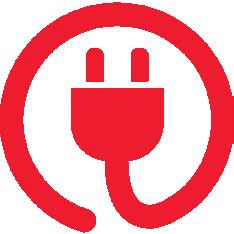
One main factor in determining cable type is the immediate environment.

a primary consideration as it is relatively inflexible. A printed circuit board (pcb) has a limited amount of space, so making the most of it is crucial – especially as computing needs continue to increase exponentially with continuous technological advancements. Engineers are tasked with packing as much computing capacity as possible into their boards and applications and are cognizant that any unused space on a pcb may be seen as wasted money due to the high perceived cost-per-square-inch. These factors equate to limited space remaining for the required power components. This is one reason power density is at a premium. Power needs increase yet the allotted space in a board or in a system remains the same (or even shrinks). And given the cost and sheer amount of networking equipment in today’s advanced data centers, even minimal board-mounted power density improvements can have wide-reaching impacts.
As global reliance on data centers grows, so too does their energy consumption. While estimates on data centers’ total worldwide energy consumption vary, it’s generally agreed that the number falls in the range of 1-2% — representing a significant portion of global energy use. No matter what the actual number is, improving efficiency even by a small margin would, at this scale, result in a significant reduction in overall energy use. That’s good for the Earth and operators alike.
With concerns about sustainability and energy efficiency reaching a boiling point worldwide, engineers and power specialists are hard at work developing solutions to make more efficient data centers a reality. Often, these solutions present a paradox: Data center designers and operators are looking for options that both boost power density and improve efficiency. It’s a complex and seemingly contradictory task, but success, it turns out, may hinge on broadening the conversation.
Power density is often viewed as a board-level concern, but that approach limits the potential for density and efficiency improvements at scale. Instead, the conversation must extend beyond boards and components to the power architecture of the facility. By taking a holistic view of power density in a data center — from the utility entrance to the cabinet, the rack to the board — designers can take the necessary steps to mitigate energy loss across the operation.
When designing the power infrastructure for a data center, efficiency and power density come down to three key factors: footprint, voltage, and cooling. Engineers must balance these factors as they push the limits of optimization to increase power density at both the board and facility levels. Success in this endeavor may hinge on designing for efficiency and density from day one.
Footprint, of course, often becomes
Data centers only use approximately 50% of their energy to execute computing functions.

From an efficiency perspective, one aspect to consider is the operating voltage on the board. Traditionally, the voltages used in data centers at the chip level and along the utility entrance have been on the lower end of the spectrum. Lower-voltage architectures require higher currents – higher currents result in lower efficiency from transfers of energy (i2r losses), especially if sufficient space cannot be afforded to mitigate the issue. To help, board designers are increasing voltages as close to the IT load as possible. Implementing higher-voltage board-level power architectures, such as 48V architectures, can both help improve efficiencies and power densities. The spacing required to avoid arcing at higher voltages, however, is a tradeoff that must be taken into consideration.
Beyond board-level power density, many of the principles we’ve discussed are also relevant at the cabinet and facility level. Keeping power density considerations in mind from the very beginning of the process can help ensure more efficient and cost-effective operation in the future.
Strategies like reducing the number of conversion steps required to provide the precise power needed for networking equipment or implementing high-voltage infrastructure as close to devices as possible can help designers achieve better power usage effectiveness (PuE) throughout a facility. The complex relationships between these factors can make optimization
challenging, but accounting for them during the initial stages of facility, rack, and board design can help optimize operations.
The third factor noted above, cooling, presents another confounding element in data center design. Done correctly, it can improve efficiency, protect equipment, and help boost performance. Done wrong? It can have serious (and costly) repercussions.
Incredibly, data centers only use approximately 50% of their energy to execute computing functions. Of the 50% used for computing, about 98% is used to support IT loads. The remaining 2% is shed as heat in the power conversion process. Of the remaining 50% of energy used, 2540% is typically allocated to HVAC systems to maintain the computer room environment, or to computer room air-conditions.

The scale of the facility and operations exacerbates the issue, making cooling an even more significant consideration for larger, power-hungry data centers. In addition, because cooling elements create their own heat, a system that’s not cooling equipment properly ends up contributing more heat to the overall equation. Building smaller facilities doesn’t solve the issue; packing more computing power into smaller spaces actually compounds the issue further as proximity increases temperatures.
There are several options for cooling data centers — with air conduction, liquid cooling, and geophysical solutions being the most popular. Each has its own benefits and drawbacks. Deciding which is appropriate for a given build is a complex process that should take into consideration the size
ABB’s robust line of dc-dc bus converters meet the needs of OEMs developing solutions for data centres.

ABB’s Edge data center power architecture is able to meet the demands of data centers.
For over 20 years, our global customers have counted on us to bring their products to market efficiently and with peace of mind. As your EMS solutions partner in Canada and the USA, we evolve with you to accommodate your specific needs! We are certified and ready to launch your ground-breaking product.
Connect with us and experience the DSM difference!
See what's new at DSM! dynamicsourcemfg.com

and location of the facility, its proximity to cold air or water sources, and the equipment within it. Data center power designers and engineers can also benefit from keeping scalability in mind when comparing cooling methods to help ensure any choice they make can accommodate future plans for expansion.
As power demands rise and energy use in data centers continuous to increase exponentially to keep pace with evolving networking needs, it’s more critical than ever for power designers and data center operators to view equipment and facilities through a holistic lens. This can help them to better tackle potential energy waste and inefficiencies across equipment and operations on the front end of data center planning. By considering operations as a whole, designers may find ways to boost carbon-reduction initiatives, lower energy consumption, enjoy practical business benefits, and do their part to build a more sustainable future.
www.abbpowerconversion.com
ABB Power Conversion designs and manufactures power solutions for 5G, wireless, data centre, and industrial applications.
Electronics Manufacturing Services


Dynamic Source Manufacturing Inc.
Canada Facility: 403 516 1888 | USA Facility: 480 351 7005

WELLER TOOLS
WXsmart smart soldering platform consists of a 2-channel soldering station and a hot air module with an air and vacuum requirements, from pico to micro and ultra soldering are part of this platform. A calibration unit, as well as a soldering tip holder make it a complete platform that manages the complete soldering process. The all-in-one hand soldering platform comes with the Total Process Control (TPC), offering a maximum connectivity and traceability at the highest quality. Platform fully supports all IoT standards, and comes with cyber security to prevent costly downtimes.
www.weller-tools.com
ground required) installations. Initially, 12V and 24V output voltages are available, with 15V, 18V, 28V, 36V and 48V models later.

www.us.lambda.tdk.com/assets/ TDK-Lambda%20CUS250M%20 Press%20Release.pdf
SABIC ULTEM DT1820EV resin assists designers in elevating the styling and aesthetics of consumer electronics, while reducing costs by approximately 25% compared to metal. Product delivers a smooth, high-gloss finish that provides an improved surface for different decorative aesthetics: paint-free colour, secondary painting or metallization using physical vapor deposition (PVD). The polyetherimide material features surface hardness to help minimize scratches and high modulus to avoid PVD layer cracks.
sabic.com/en
contributing to package warpage, reduce energy consumption during the reflow process, and avoid potential damage to temperature sensitive devices. TempSave B58 is a eutectic SnBi alloy with a melting point of 139°C while TempSave B37 is a ductile hypoeutectic SnBi alloy and does not contain Ag. www.nihonsuperior.co.jp/english
Sticklers Pro360 touchless cleaner is a full fiber end-face cleaner that boosts performance using a hand-held dispensing wand to deliver a micro-dose of atomized, high-purity cleaning fluid within a narrow column of pressurized air onto a fiber optic connector end face. The contamination is carried away from the end face with the cleaning fluid during the drying process. The end face is left clean and dry after one 3.5 second cycle making light work of end-face cleaning. www.microcare.com

Field-proven, high-speed data transfer portfolio includes USB 3.1 and Single Pair Ethernet connectors. Devices provide data transfer speed up to 10Gb/s. Device’s state-of-theart inserts ensure optimum shielding & absolute signal integrity. Products are equipped with a pair of USB 2.0 contacts to ensure backwards compatibility as well as a low voltage power contact.
www.lemo.com/en
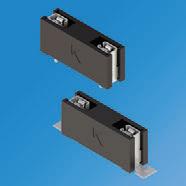
Keystone Electronics full line of fuse clips and holders includes low insertion force, reliable and compact automotive blade fuse holders for Maxi style devices. Made to ensure secured positioning during soldering, holders support voltage up to 500Vac and 40A, as well as fully insulated clips to protect fuses and reduce assembly time. Insulators are made of PA9T black nylon with tin nickel-plated copper contacts to withstand shock and vibration. www.emx.ca/

TDK-LAMBDA
CUS250M series of 250W rated power supplies deliver standard 2” x 4” footprint. Product’s mechanical configurations enables both convection and conduction cooling through the product’s baseplate to provide silent cooling. Units are certified to the industrial IEC 62368-1 and medical IEC 60601-1 standards for both Class I and Class II (no earth

NIHON SUPERIOR TempSave series of low temperature soldering materials address the needs of reduced peak reflow temperature to reduce defects
EP5TC-80 one part, NASA low outgassing rated epoxy achieves a thermal conductivity of 3.3-3.7W/ (m·K), while retaining electrical non-conductivity. Product requires a cure at 80°C for 1.5 to two hours. To optimize performance properties, a post cure of 1-2 hours at 80°C is recommended. Featuring a thixotropic paste consistency, this compound adheres well to a variety of substrates such as metals, composites, glass, ceramics, and many plastics.
www.masterbond.com/ properties/thermally-conductive-epoxy-adhesives

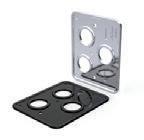
BMI323 Inertial Measurement Unit (IMU) boosts performance and integrated features enabling a shorter development time. The general-purpose, low-power IMU combines precise acceleration and angular rate (gyroscopic) measurement with intelligent integrated features that are triggered by motion. Device speeds dev time. www.bosch-sensortec.com
Visit ept.ca for the latest new products, news and industry events.

Phoenix Contact’s expertise spans a wide range of applications, so you can make power, control, and network connections with absolute confidence. No matter the application, you can trust Phoenix Contact for consistent quality, reliability, and high performance—every time.
Lever-actuated PCB terminal blocks bring a new dimension of convenience to wire-to-board connections. The new LPT 16 terminal blocks combine lever actuation with highly reliable push-in termination for an intuitive and fast connection. This provides a higher degree of reliability in the field and ensures the cost-effective operation of the entire system.

For a more immersive experience, view our photorealistic LPC and LPT products online at www.phoenixcontact.com/snap.

Discover new capabilities within the popular M12 connector family when bringing power to a device or cabinet. Now capable of 16 amps with four positions plus ground, M12 offers a complete range of cable assemblies, field-wireable connectors, and panel-mounted receptacles with a quick disconnect system for plug-and-play power.
Phoenix Contact offers products with advanced shielding technology as an innovative concept for sensor/actuator cabling. The company’s extensive line of device connectors allows you to power your device in a multitude of styles.

It’s small in size with big power from your trusted source, Phoenix Contact. Learn more at www.phoenixcontact.com/m12power.
Phoenix Contact offers PRC installation connectors ideally suited for compact and safe power transmission up to 35 A. The PRC series is made for extreme environments. As a result, it has a wide range of connection solutions in building, industrial, and outdoor applications.
• With the particularly compact PRC 20 installation system, you can transmit currents of up to 20 A. The system is suitable wherever there is little space available for power distribution.
• The PRC 35 series installation system is ideally suited for compact and safe power transmission up to 35 A in building, industrial, and outdoor applications. PRC power distribution and cable assemblies eliminate the need for time-consuming wiring in the field.
Visit www.phoenixcontact.com/prc to find out more about our portfolio of installation systems for your application.








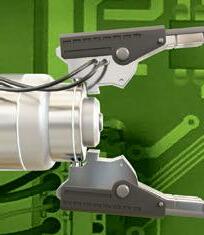






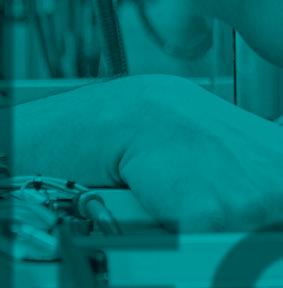






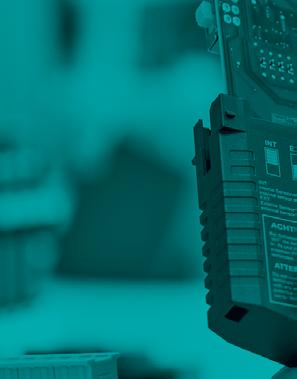










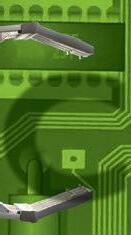






















OMNETICS CONNECTOR CORPORATION is a leading global provider of precision and high-reliability electronic connectors and interconnect systems. For more than 30 years, we have engineered an extensive portfolio of innovative products, with a special focus on micro-miniature and nano-miniature interconnects. With over 300 direct employees, all products are built in the Minnesota factory in compliance with ISO 9001 offering QPL products to MIL-DTL-83513 and MIL-DTL-32139 and are ITAR registered.
Our connectors are among the smallest on the market and deliver exceptional performance in challenging work environments. As interconnect technologies continue to evolve, we design next-generation products that help bring transformative ideas to life.
Our connectors are highly sought after by designers working in the military, aviation, aerospace, medical and other leading-edge industries. We are also leaders in high-mobility interconnects for applications in robotics, surveillance systems and orbital satellite technology.
Omnetics understands the rigorous operating conditions mission-critical applications endure and our solutions include EMI shielding, IP sealing, polarization, rugged materials, and other elements that ensure connectivity under pressure. We maintain a large inventory of COTs products.

Omnetics’ range of nano, micro and hybrid connectors are ideal for defence programmes, where factors such as size, weight, signal integrity and reliability are thoroughly considered. We provide a variety of reduced size and weight interconnection systems:
• Micro and Nano strip connectors
• Micro and Nano circular connectors
• Bi-Lobe® / Nano-D
• Polarized Nano connectors
• Squeeze-latching Nano-D and Micro-D connectors
Modern soldier electronic systems are being developed and deployed at a tremendous rate. Key parameters include short run interconnections, high portability, small size, low weight, rugged performance and higher speed electronics. Combining all of those parameters within one operating interconnection unit takes a lot of engineering, which is where Omnetics comes in.
Quick and efficient engineering is completed to meet the objective of the application needed for the mission. Often times, system designers consider ruggedized connectors currently available, and when existing products don’t meet their application requirements, must consider modified connector designs. They may be needed to meet the challenge of their new products and how they are used. Omnetics assists by not only offering samples of the standard connectors for evaluation, but will have a “solid model” design team leader work directly with you to modify the interconnect design to meet your requirements.
New connector formats evolve and the changes can be reviewed with those involved directly in the electronics they will be used with. Omnetics begins by using proven connector components from existing QPL certified and military tested connectors. Omnetics connectors employ a BeCu (beryllium copper) spring pin to
• MIL-DTL-32139 Nano-D connectors
• MIL-DTL-83513 Micro-D connectors
• Hybrid connector configurations
• Cable assemblies
• Wire harnesses
socket system in their rugged interconnects proven to exceed the shock and vibration testing in Mil. Spec 83513 and 32139. A new connector can be formatted quickly for early field testing with assurance it will perform well in the battlefield arena. When designing Micro and Nano sized cable and connector systems used in advanced systems, consider Omnetics. Our advanced design group works directly with your engineers and forwards early designs to our fast-turn product development group. Early samples give the system designer a big advantage in formatting and modeling our next generation soldier electronics package.
New connector forms are rapidly designed using proven connector and materials as a
reference to modify shape, size and function. Tailored connectors will often solve new instrument needs and secure high reliability performance based on proven materials and processes from our established standards.
Omnetics is a world leader in miniature connector solid-model design partnering with customers to provide perfect-fit cable and connectors for advanced applications.
Using 24-hour 3D material added processes designers can conceive, model and build test devices quickly to meet their needs.
Omnetics has a direct Three-Step-Process. Our application-specific connectors will meet customers’ needs and be available on-time!
1. Designers can view miniature connectors with proven performance on our website or discuss with our sales team. If one looks close, ask for a sample or discuss variations on email or the phone.
2. Connect with an Omnetics connector designer for on-line collaboration making a new solid model of exactly what is needed. This should take less little as 2 days.
3. When you like the solid models, ask for a 3D sample made using automated material added process. This should take less than 24 hours.
The new 3D model is shipped to the customer to fit it into his new application for final approval or/and re-define some specific change needed.
Modified connectors are highly used to combine signals in what we call mixed-signal or hybrid connectors. Coax and power signal are routed through the same connector and cable as multiple digital signals. This significantly reduces the size, weight and routing complexity for the system designer. Specific applications using Omnetics connectors include high speed soldier borne and helmet communication cables, connectors for cube satellites, orbital radio circuitry on satellites, UAV controls, surveillance system digital data connectors, missile control electronics, robotic interconnections, spinal modulation, prosthetics, catheter cable to monitors and more.
We take great pride in the products we build for you. Our design team works closely with customers to create new and custom interconnect solutions for tomorrow’s innovative products. Our connectors are designed, produced, and tested by hand at our plant in the United States, which features in-house automatic machining and over-moulding equipment.
Omnetics is a privately held company and we exist to advance innovation wherever it is needed next.
OUR DESIGN TEAM WORKS CLOSELY WITH CUSTOMERS TO CREATE NEW AND CUSTOM INTERCONNECT SOLUTIONS FOR TOMORROW’S INNOVATIVE PRODUCTS
Omnetics’ connectors and cable harness range complex to basic with experience expanding the globe to serve key requirements for extreme rugged performance in unique environments. They meet Quality and Performance specifications for Space applications used in NASA and ESA with cable and connectors in CubeSats to Mars and Military Specifications.
A wide range of connectors and cable configurations are available.
Omnetics’ connectors and cable assemblies are 100% customizable.

Omnetics’ techniques enhance ruggedness and durability.




• North American and international plugs, sockets, and connectors

• Power entry modules with both North American and international approvals
• North American and international socket strips
• Accessory Power Strips, Jumper and power cord sets
• North American and international hospital-grade cords Interpower
SINCE 1975, Interpower® has made it easy for electrical equipment manufacturers to design and export equipment. We offer country-specific power cord sets, inlets, outlets, and other components exceeding the standards of global agencies.

Interpower simplifies the designing and building of products worldwide by manufacturing best-in-class electrical products and customer service. www.interpower.com
INTERPOWER®

Interpower® rugged and reliable North American 5-15, 5-20, 6-15, and 6-20 cords and international power cords with country-specific plugs and IEC connectors are just a few clicks away. Interpower is one of two remaining electrical cord manufacturers in America. Moreover, if the cords you need are in stock, we can ship them the same day!
Made in the United States of America, Interpower cords, cord sets, and components are tested and retested until surpassing the most stringent agency standards. “We test more than the standards require,” Interpower Product Development Manager Ron Barnett said. “We do so because it lends better reliability to our design.”
Amperage, gauge, length, and color—these preferences are up to you. Whether barcoded and labeled, or hanked, coiled, tied, bundled, bagged or boxed. Whether ordering 1 cord or 5,000, Interpower provides customized solutions.
• World-class customer service 7 a.m. to 6 p.m. CST
• Custom lengths, colors, packaging and barcode labeling available
• Same day shipping on in-stock cords and components
• No minimum order or dollar requirements



HIGH POWER TERMINAL BLOCKS have been around for a long time. Generally speaking, these products range between 50 to 750 amps and up to 600 volts. During the last several years there has been new requirements in the following industries for these products:
• Automotive Vehicle EV Charging Stations
• Solar Power
• HVAC
• Wind Power
• Server Farm / Bitcoin
• Factory Automation Motion Control
Customers expect to have a wide range of products available to suit their electrical design and packaging/mounting requirements. The last few years have also seen logistic and manufacturing constraints and manufacturers never seem to have the right product and lead time available. These requirements have spawned the need for more flexible and ease of assembly to suit customer designs.
Some new solutions have been developed to deal with these problems. One is more modular designs where the factory or the customer can just snap together the number of poles they require. Need a 2 or 3 pole 115 Amp/600 Volt product? No problem, just snap it together and you have fulfilled your requirements. The factory can produce tens of thousands of a variety of single pole blocks with no specific customer requirements that can be inventoried and assembled quickly in any configuration for any customer.
These high power rugged terminal blocks have become available in many mounting styles and configurations including:
• Modular
• Modular Panel Mount
• Modular Din Rail Mount

In every case, modularity for ease of assembly and instant configurability and delivery drastically reduce lead times.
High current/voltage P.C. board requirements have also brought new products to the marketplace. In the past, exceeding 50 amps on a P.C. board was not
MODULAR HIGH POWER TERMINAL BLOCKS FOSTER QUICK ASSEMBLY. EIGHT DIFFERENT CONFIGURATIONS.

common. Not anymore! Various models of high power rugged thru hole and surface mount terminal blocks are available. Ratings start at 35 amps and go up to 150 amps on a P.C. board! Typical applications are found in industries such as:

• Power Supplies
• Solar Power
• Inverters
• Motor Controls
• Battery Chargers - Automotive / Off Road / Marine / Forklift
• Batteries
• CNC Equipment
600 VOLT/115 AMP P.C. TERMINAL BLOCK.
New developments in high power/rugged terminal block marking have been driven by accurate and clear connection information required by manufacturers to facilitate error free installations. It is very expensive to have installers mis-wire equipment in the field. Damage to expensive electronics and possible injury to people mean that clear custom marking be displayed to insure proper connections. New laser marking technology allows marking these terminal blocks in extremely difficult places on the terminal block. Old methods of pad printing which are slow and costly often added long lead times to product delivery due to customization.

COLOR CODED/ LASER MARKING INSURES PROPER CONNECTIONS.
During the last several years, requirements have risen for very heavy power terminals on P.C. boards for such products as welders, motors and batteries. Structural robustness is obviously important when designing very high current applications. Many times thru hole P.C. terminals are necessary requiring connecting a number 4 or 6 AWG wire to a P.C. board.
30-150 AMPS THRU HOLE & SURFACE MOUNT P.C. BOARD STAND ALONE TERMINALS.
Terminal block connectors have been available in ratings from 1 amps to 750 amps for many years. However, marketplace requirements driven by renewable energy, electrification of products that were previously fossil fuel driven, and server farms have created a marketplace for new designs in higher power ruggedized connectors.


Henkel and Quad Industries, a Belgian specialist in printed electronics, have developed a new concept to enable innovations for smart health patches with accelerated speed to market at lower cost.

The partners are offering a demo package of 12 electrodes that customers can order online. The demo package is designed to allow engineers to quickly test the functionalities of their concepts, significantly reducing the development time by up to three months and lowering the overall design costs.
Medical engineers can use these patches to test their initial concepts, allowing them to move into the phase of custom design much sooner, in a more targeted way. This approach aims to enable a more efficient design, saving at least one prototyping cycle and the respective time and cost invest. In addition, customers can find all relevant information and materials in a few clicks, where previously, they needed to coordinate with various suppliers, from design to production, according to Stijn Gillissen, global manager for printed electronics at Henkel.
This new approach also represents a significant shift in the health patch value chain for Henkel, from its initial position as supplier of materials and inks for the patches to the dedicated partner for the entire prototyping process, from design to proof of concept for production, in collaboration with Quad Industries.
PEI-Genesis has acquired California-based Testco Inc., a supplier of passive, electromechanical, and interconnect components with 40 years of customer excellence. The purchase allows the company to better serve a broader range of customers’ needs for IP&E product solutions.
Testco supplies passive, electromechanical, and interconnect components with superior technical expertise and broad product knowledge. Serving technology companies worldwide for over 40 years, Testco offers creative supply chain solutions to meet customer requirements. With flexible blanket orders, bonded inventory, consolidated shipments, and annual pricing programs, Testco can solve the most difficult supply challenges.
PEI-Genesis will operate Testco as a separate company, continuing to work with Testco as an authorized supplier partner. The Testco division will now be championed by Richard Watt, Vice President of North America Sales at PEI-Genesis. Testco’s, Jeff Meyer, will remain as President to help grow and integrate its operations into PEI-Genesis. PEI will continue to support the existing Testco distributors and rep network.
Vishay Intertechnology Inc., one of the world’s largest
manufacturers of discrete semiconductors and passive electronic components, has acquired MaxPower Semiconductor Inc., a San Jose, CA-based fabless power semiconductor provider dedicated to delivering innovative technologies that optimize power management solutions. With a substantial IP portfolio of more than 100 patents, MaxPower’s proprietary device structures and process techniques provide leading edge silicon and SiC MOSFET products. Its SiC product development includes both trench and planar technologies from 650V to 1,700V targeting automotive and industrial applications.
“As Vishay orients the company for growth, innovation will play an important role, and we plan to intensify business development activities focused on acquiring technologies that offer attractive opportunities to expand our product portfolio and strengthen our competitive positioning,” said Marc Zandman, executive chair of the board. “Importantly, this acquisition will enable Vishay to support customers’ advanced development of high voltage electrification applications thereby opening the door for us to provide them with our entire portfolio of products.”
XPtronics Inc., a Toronto-based CEM and pcb board shop, has added to its management team by appointing Bob Ashmore in a newly created position of national sales and marketing manager.
Ashmore brings more than 20-years of sales & marketing management experience within the electronics industry.
J-Squared Technologies Inc., a leading provider of ruggedized computing hardware solutions, has entered into a strategic partnership with Blaize, enabling the
distribution of the firm’s Graph Streaming Processor (GSP) architecture hardware and software technologies.
“In many industries, SWaP-C (size, weight and power – cost) has become a critical - if not top - priority. Our mission is to educate ourselves on technologies that can meet these demanding requirements and provide exceptional performance. Blaize’s products check these boxes,” said Jeff Gibson, CEO and founder of J-Squared. “Their GSP architecture makes it possible to deliver AI solutions at the edge efficiently and cost-effectively. With our distribution capability, this partnership enables both Blaize and J-Squared to address a growing market need.”
J-Squared is a global provider of ruggedized hardware systems and support that meet and exceed MIL-standard requirements for harsh environments in the military, aerospace, mining, transportation, and energy sectors. With multiple form factors, Blaize brings a new class of programmability and efficiency benefits of its GSP architecture to embedded systems. The small form factor SoM is suitable for rugged and challenging environments and embedded systems that need an extended temperature range experienced in harsh environments.
Exro Technologies Inc., a Calgary-based clean technology company that has developed new generation power electronics, has achieved International Organization for Standardization (ISO) ISO 9001:2015 certification at its manufacturing center and engineering innovation center, both located in Calgary.
This certifies that the Company has met the technical and quality benchmarks required by ISO 9001:2015 for its quality management system related to R&D, design, development, and testing of Coil Driver inverter for e-mobility and Cell Driver energy storage systems for commercial & industrial applications.

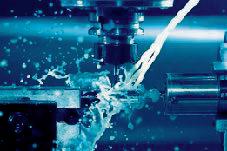











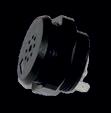
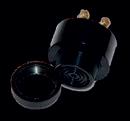



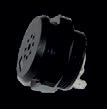


VENDOR: MICROCHIP TECHNOLOGY AVR-IOT CELLULAR MINI DEVELOPMENT BOARD
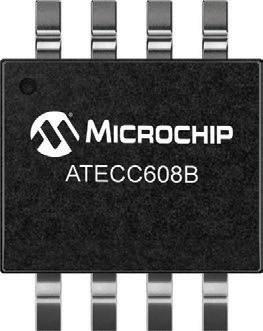
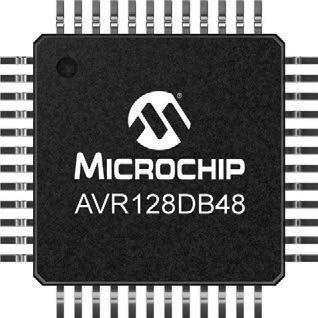
AVR-IoT Cellular Mini Development Board is a complete platform that can be used to evaluate and develop IoT solutions. It features the AVR128DB48 AVR microcontroller, ATECC608B secure element, and the Sequans Monarch 2 GM02S cellular module. Sensors and actuators can be added using the onboard Adafruit Feather compatible edge connector or Qwiic I2C connector. The Amazon Web Services and Arduino-compatible Development Board also includes a Truphone SIM card.
AVR128DB48 AVR microcontroller
ATECC608B CryptoAuthentication device
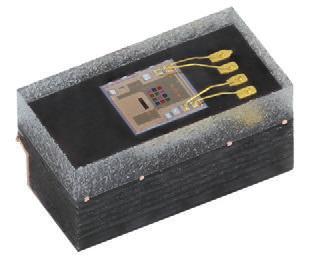
25CSM04 serial EEPROM 4Mb
GM02S cellular module 824-2170MHz cellular flexible antenna
Prepaid SIM card from Truphone 150MB data included
Nano SIM card holder
eSIM footprint
Five user LEDs
Two mechanical buttons
VMK3-9002 32.768kHz crystal
VEML3328 color sensor

MicroMCP9808 temperature sensor Adafruit feather-compatible edge connector
Qwiic I2C connector
• Onboard debugger
▫ Board identification in Microchip Studio and Microchip MPLAB X
▫
One green power and status LED
▫ Virtual serial port (USB CDC)
▫
Two logic analyzer channels (debug GPIO)
• Compatible with the cellular Arduino library
• USB, battery, and external-input power options
• MCP73830 Li-Ion/LiPo battery charger, with charge status, LED
• Two fixed power domains, 1.8V and 3.3V
Fig 1
AVR DB 8-Bit Microcontrollers
8-bit MCUs with core independent peripherals, analog signal conditioning and multi-voltage I/O.

Fig 2
This dev board is a complete platform that can be used to evaluate and develop IoT solutions.

ATECC608B CryptoAuthentication
Devices are high-security cryptographic devices that secure hardware-based key storage up to 16 keys.
Scan here to view and download the full data sheet in pdf format.
Fig 3
Vishay VEML3328 & VEML3328SL RGBCIR Color Sensors
Devices integrate photodiodes, amplifiers, and analog/digital circuits into a single CMOS chip, enabling them to sense red, green, blue, clear and IR light.
Fig 4
Sequans Monarch 2 GM02S Module An LTE Cat M1/NB1/NB2 module based on the Monarch 2 chip platform.































